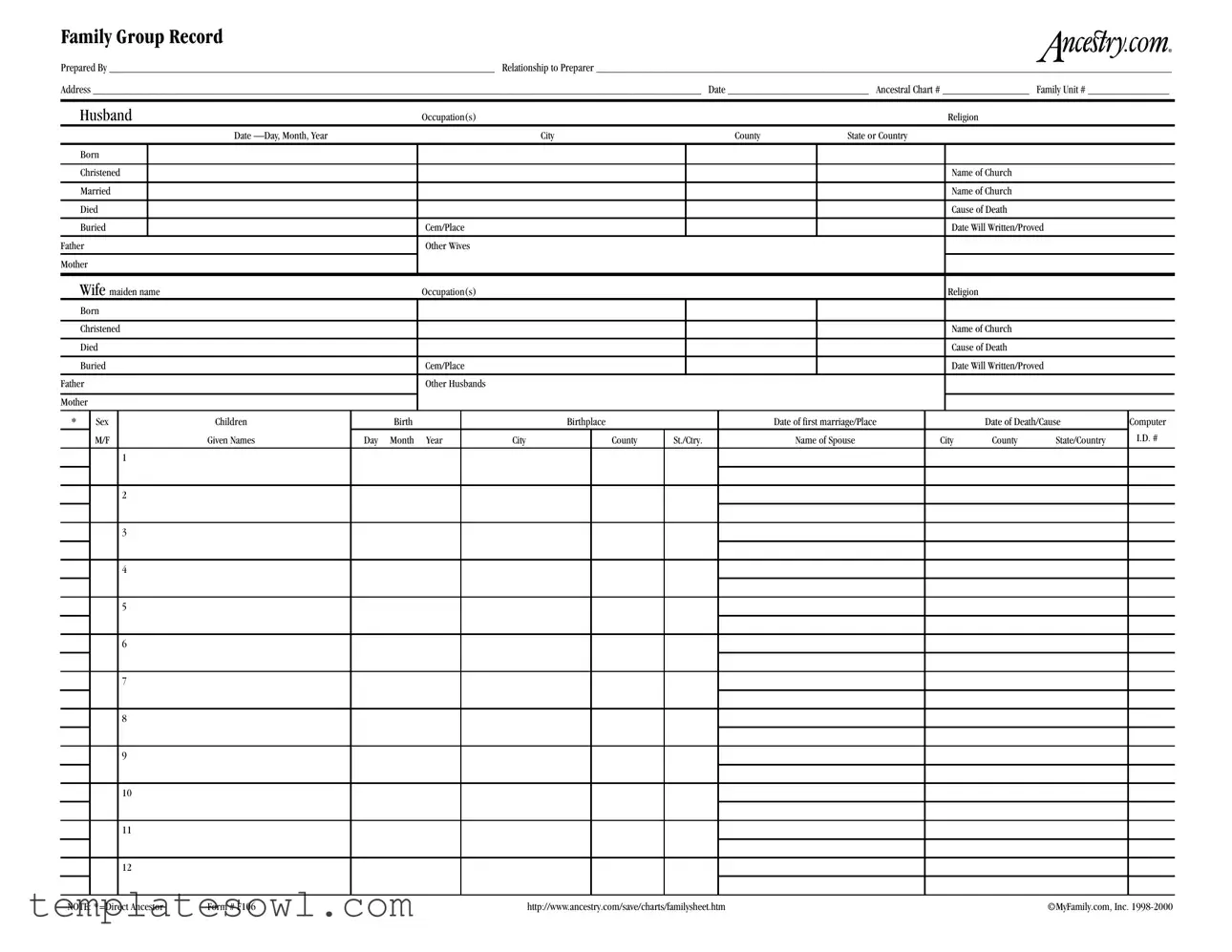Filling out the Family Group Record form can be a daunting task, especially when you're focused on gathering detailed information about relatives. However, there are several common mistakes that can lead to inaccuracies and frustration. Understanding these mistakes will help ensure that the information recorded is reliable and valuable.
One common mistake is neglecting to fully complete all sections of the form. Each individual should have their information filled out in its entirety. Ignoring sections like occupation, religion, or burial details leaves gaps in the family history. Such omissions can prevent future generations from gaining a complete understanding of their ancestors.
Another mistake is not double-checking the spelling of names. Names may look simple, but variations exist due to cultural differences or changes over time. Failing to record the correct spelling can lead to issues in genealogical research later on. Additionally, using initials instead of full names can confuse family connections.
Using vague dates is a third mistake that many make. When asked for specific dates such as birth or marriage, providing only the year instead of the full date can diminish the accuracy of the family tree. Dates should always be as precise as possible because they play a crucial role in establishing timelines.
Forgetting to record relationships clearly is another critical error. Each individual's relationship to the preparer and other family members needs to be explicit. Mislabeling relationships, such as confusing siblings with cousins, can skew the entire family record. Clear definitions ensure that future researchers can accurately interpret the family connections.
Inconsistent formats for recording information can also create confusion. For example, if one person's date of birth is listed as “MM/DD/YYYY” and another as “MM-DD-YYYY,” this inconsistency could lead to misinterpretation. Keeping a uniform format throughout the form will simplify the task of understanding and analyzing family data.
Failing to document sources can lead to questions about the information's validity. Including source notes or explanations for where data was obtained helps future generations understand the backstory behind each entry. Without sources, family members may doubt the accuracy of the details.
Overlooking the importance of the preparer’s information is another mistake. Providing the preparer’s name, relationship to the family, and contact details creates a point of reference for any follow-up questions. This information is essential for anyone who may want to verify or expand on the recorded data.
Lastly, not reviewing the completed form before submission is a significant error. A final review allows for catching mistakes, ensuring all information is accurate and fully captured. Taking the time to proofread can save a lot of trouble down the line, making the Family Group Record not only comprehensive but also trustworthy.

